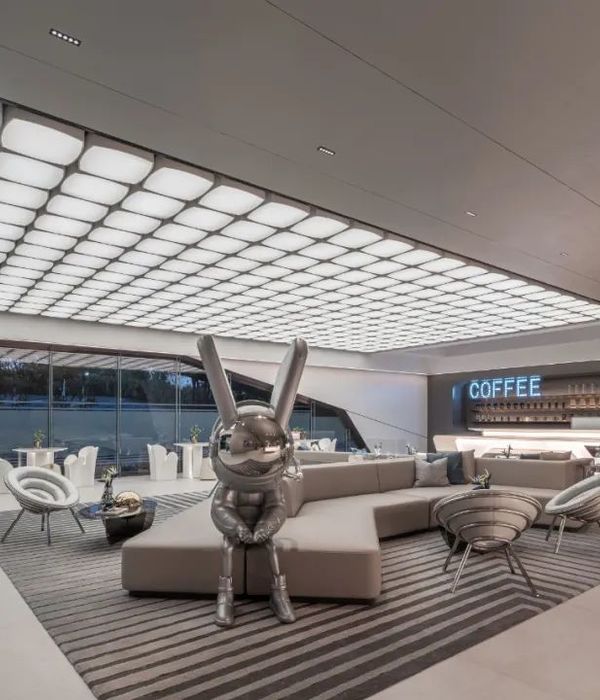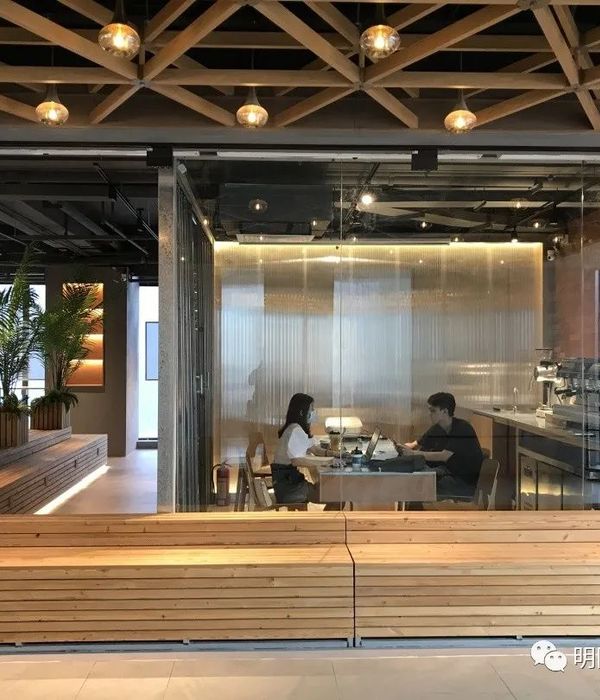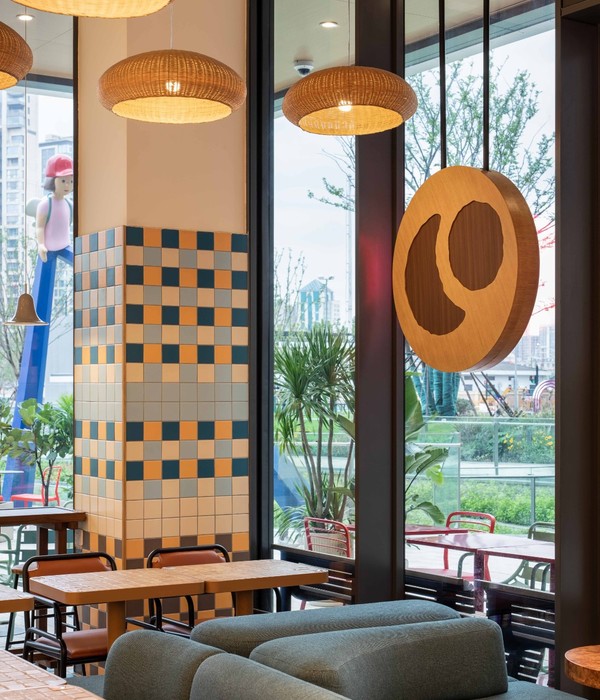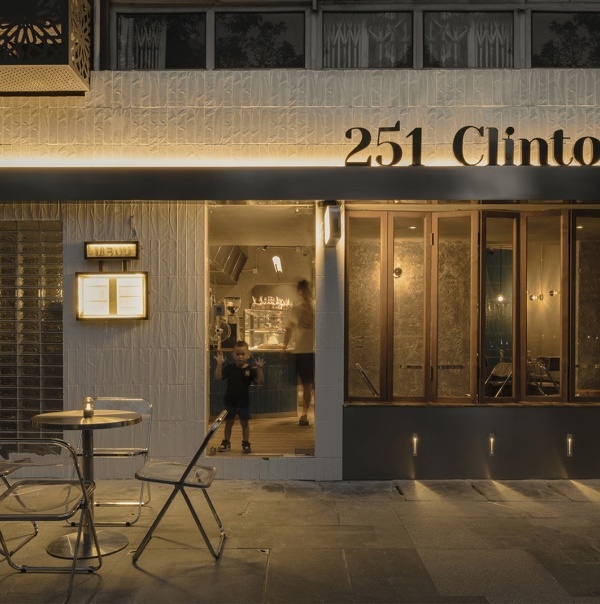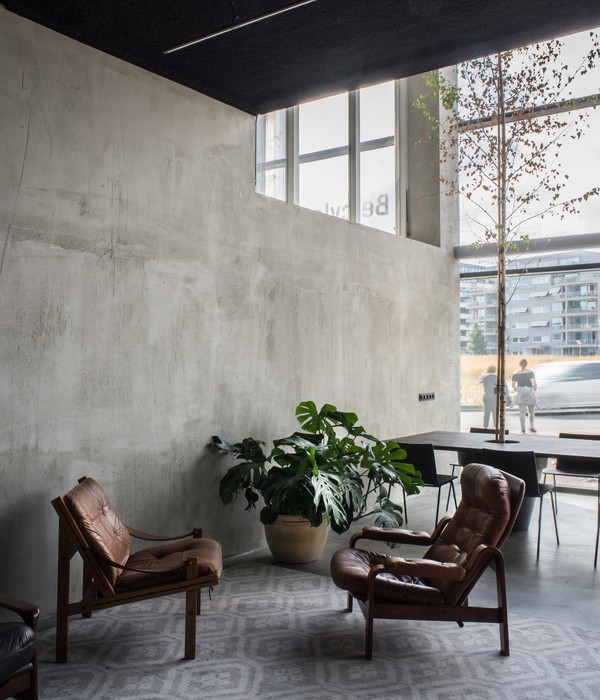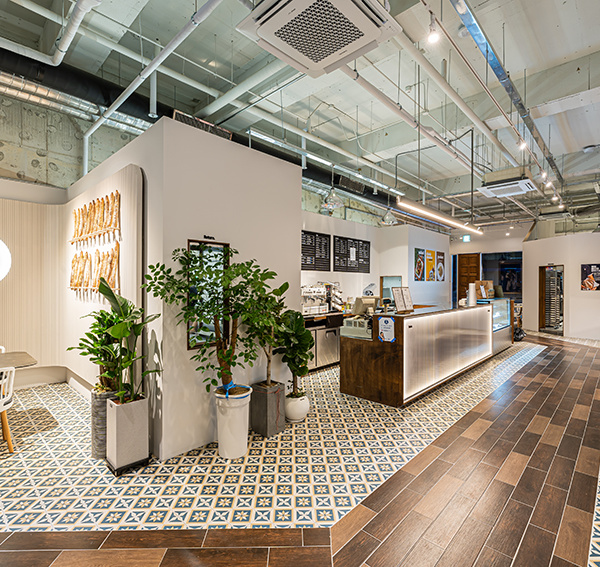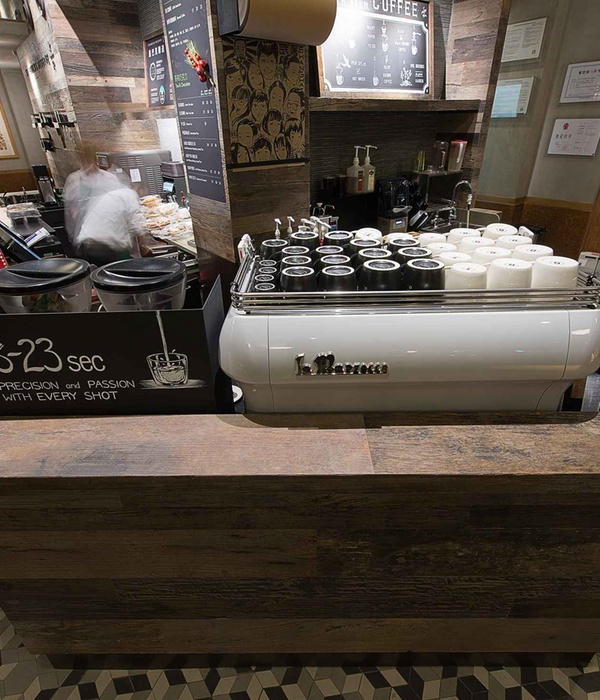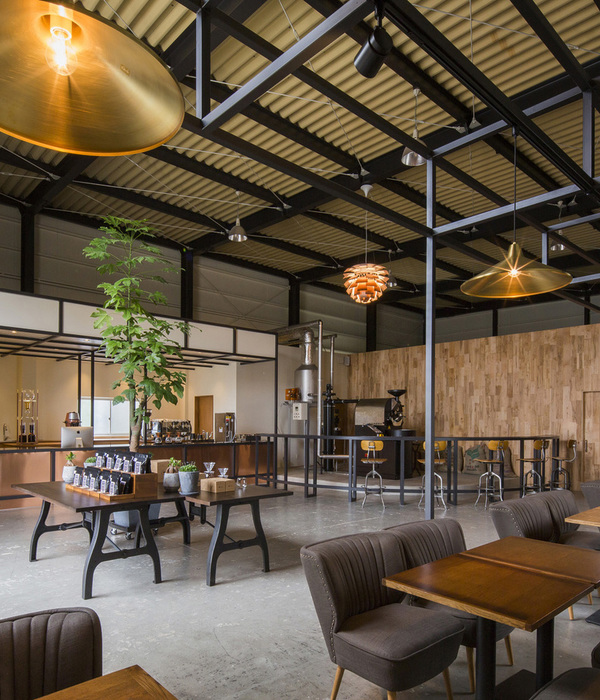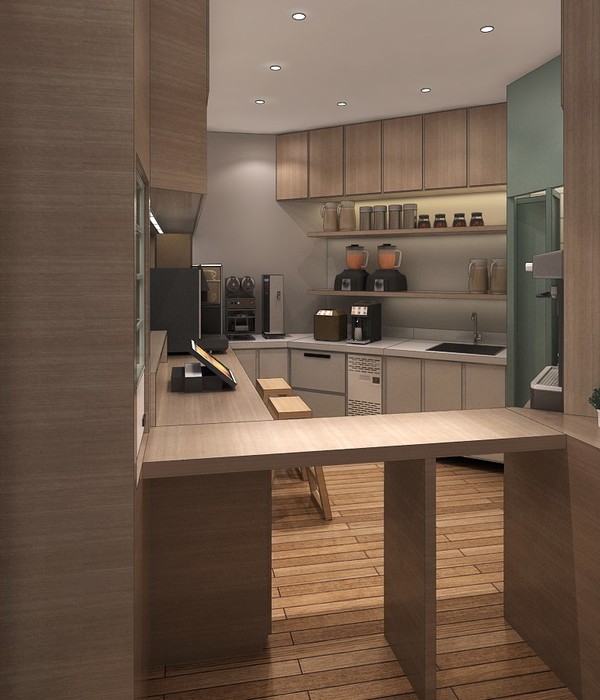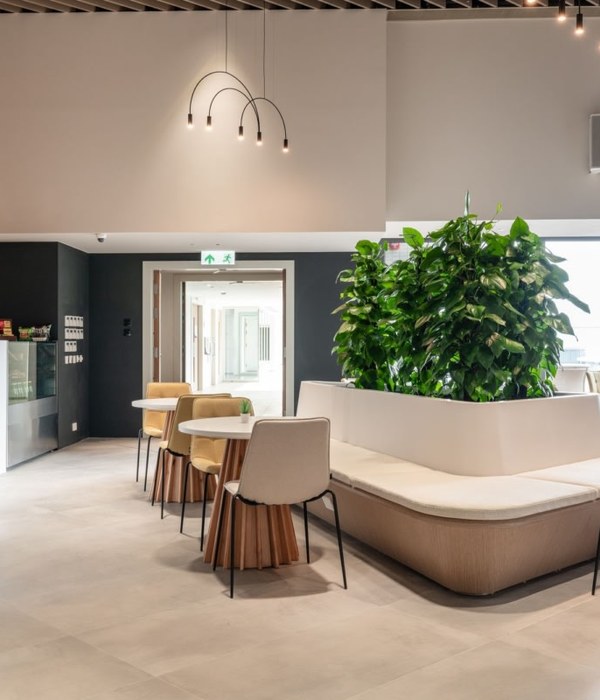该项目是共享的聚会场所,整体环境欢快明亮,透露出对顾客的款待之情。这里曾是19世纪的毛料商店,其室内风格简约,彰显了该地区的工业特色。建筑师减少设计的干预,顺应历史特征的演变。将标志性的建筑遗产改造成一个受欢迎的聚会场所,该项目以此为出发点,整体简要概括为三点:尊重仓库原有品质,培养社区意识,为周围的综合发展做出贡献。
Conceived as a shared meeting place, Gathered Cafe is an uplifting and authentic hospitality proposition harnessed by the strength of its architectural setting.Housed in a 19th-century wool store, the pared-back interior celebrates the site’s industrial character while softly layering new interventions; an evolution of its historic identity.Starting with a vision to transform the iconic heritage building into a welcoming venue, the brief from the Gant’s (Pot & Pan, Gather & Tailor) was threefold; to honour the qualities of the warehouse, foster a sense of community and contribute to the surrounding mixed-use development.
▼项目概览,overview © Jenah Piwanski
新的设计不仅尊重既有因素,更为其原有的美注入新的生命力。它接纳了未经处理的工业建筑特点,而不是利用全新干预将新旧区分开来。建筑中堂皇的大教堂般的窗户、粗钢柱和6米高的天花丰富了空间,促使设计团队围绕这些限制因素、真实性和时间展开叙述。饰面色彩简约,真实表达材料,包括弦锯橡木、古董黄铜和天然皮革,与未经处理的建筑墙面和谐相映。
The new design not only works respectfully within the parameters of the existing building, but brings to life its innate beauty.The untreated industrial qualities of the building are embraced rather than clouded by the new intervention, thoughtfully distinguishing old from new.The site’s grand, cathedral-like windows, raw steel columns and soaring 6-metre-high ceilings presented a rich architectural canvas, driving the design team to develop a narrative around restraint, authenticity and time.A reduced palette of honest finishes, including crown-cut oak, antique brass and natural leather, sits in harmony with the site’s raw material profiles.
▼入口,保留工业建筑特点,设计简约,entrance,preserving characteristics of the original industrial building,simple design © Jenah Piwanski
该项目建筑特征显著,但缺乏直接的视觉效果,因此使得空间规划有意聚焦内部。咖啡台饰以橡木镶板,它将游客引入高耸仓库的核心区域,这里是宽敞的就餐区,四周布置皮制长沙发。另外,Thonet品牌的曲木椅子和和黑色钢制吊灯给人一种怀旧和熟悉的感觉,精细的木制品借鉴了现代主义家居,使空间产生平衡感。纯亚麻窗帘覆盖了窗户,软化了硬质墙面,增强了空间的纵向感,使光线变得柔和。由于设计师关注建筑生命周期和环境影响,因此他使用天然材料和当地工匠,简化精细的木制产品并使其合理化,减少了浪费,并且重新利用多余的材料,例如用长沙发的边角余料制作餐厅的皮革菜单。
The striking architectural features and lack of direct outlook drove the spatial planning to have an intentionally inward focus.A coffee counter lined with panelled oak leads visitors through to the heart of the lofty warehouse, where leather-lined banquettes sweeps the perimeter, addressing an expansive dining area.Thonet bentwood chairs and blackened steel pendants impart a sense of nostalgia and familiarity, while delicately detailed joinery takes cues from modernist furniture, providing a contemporary counter-balance. The rigid envelope is softened by sheer linen drapery sheathing the windows, accentuating the site’s verticality and tempering the abundant natural light.Due attention has been paid to the lifecycle and environmental impact of the interior, favouring natural materials and local craftspeople.Joinery is simplified and rationalised to reduce waste, while excess materials are reused where possible, such as the leather tab pulls which were made from banquette seat offcuts.
▼宽敞的就餐空间,the expansive dining area © Jenah Piwanski
▼咖啡台,用橡木镶板作饰面,the coffee counter,finish with oak panels © Jenah Piwanski
▼亚麻窗帘使光线变得柔和,the linen curtains soften the light © Jenah Piwanski
▼精细的木制品借鉴了现代主义家居,delicately detailed joinery taking cues from modernist furniture © Jenah Piwanski
从最开始不同的工业用途到孤独星球杂志的总部,这个仓库虽然一直在很好地使用,但从未向公众开放。而建筑师将这个有价值的历史建筑改造成咖啡馆,促进了社区居民参与周边的发展。除此之外,这里还容纳了其他办公区域,紧凑的办公区和会议区位于夹层,优化了双层空间的使用。夹层空间和相邻的Fab9联合办公空间,与咖啡馆共生在整栋建筑中。办公区的人经常光顾咖啡馆,使这里产生社区意识,促进了知识共享和思想交流。
From its varied industrial origins to its more recent use as the headquarters of Lonely Planet, the warehouse has been well utilised, but has never before had a public face.The conversion of the building into There Cafe invites the community to participate in and contribute to the evolving narrative of the place, connecting with this valuable historic asset.The space also accommodates the headquarters for the owners’ other businesses; a compact workplace and meeting area tucked on a mezzanine level, optimising the site’s double-height volume.This workplace, and the adjacent Fab9 co-working spaces, exist in mutual symbiosis with the cafe; the workplaces giving frequent patronage, the cafe a community-minded retreat to foster knowledge-sharing and the cross-pollination of ideas.
▼厨房上方夹层是办公区域,the upper mezzanine above the kitchen is the workplace © Jenah Piwanski
▼细节,details © Jenah Piwanski
Project Size:300m2 Project Budget:$750000 Completion date:2019 Building levels:1 Project team:Ewert Leaf Location:Footscray,VIC Client:Gather & Tailor Photography:Jenah Piwanski Key products used: Site Paint – Porters Paint ‘Guerilla’ Site Paint – Porters Paint ‘Ashen’ Site Paint – Porters Paint ‘Camoflage’ Tile Benchtops – Academy Tiles – Plimepaplika ‘76998/ HC 273’ Leather Upolstery – Pelle Leathers – Semi-Aniline / Smooth Grain ‘Colorado Thatched’ Timber Veneer – Timberwood Panels – American Oak Wall Lights – Fat Shack Vintage – Glass Ball Gooseneck Wall Light Drapery – Mokum – Shoji ‘Mist’
{{item.text_origin}}

